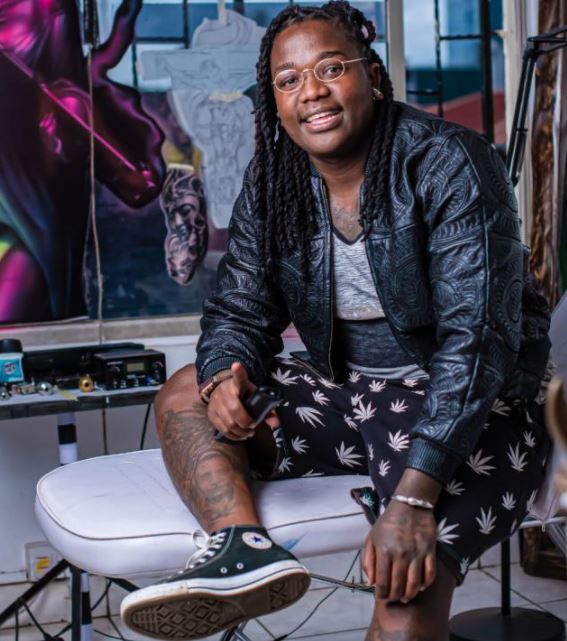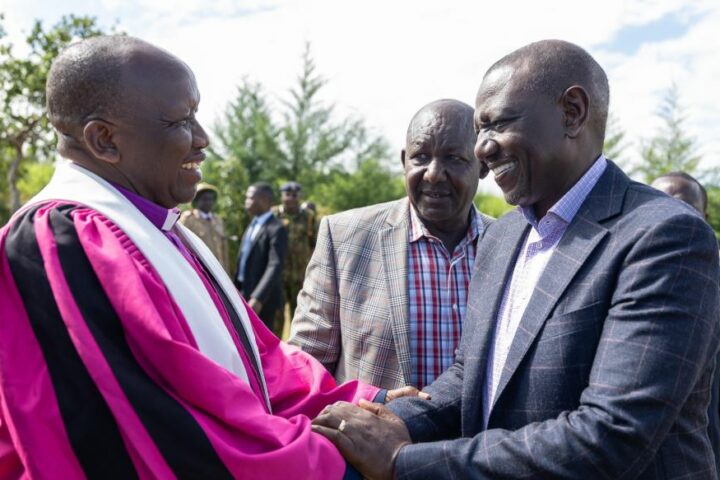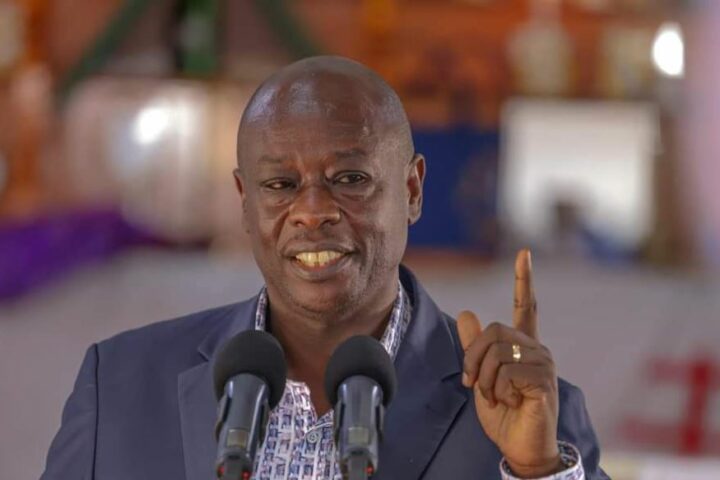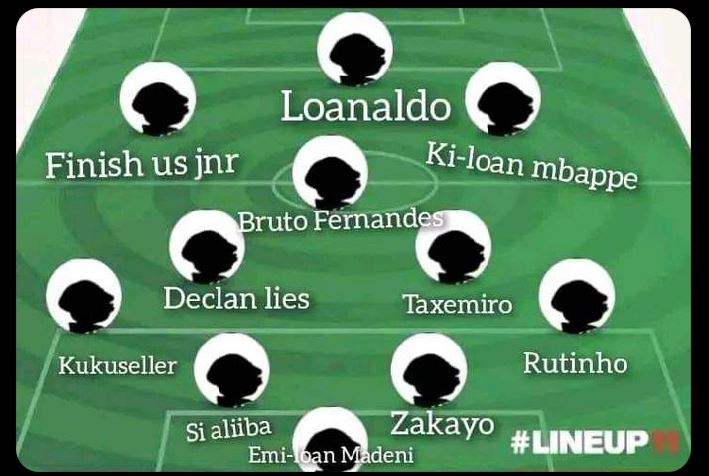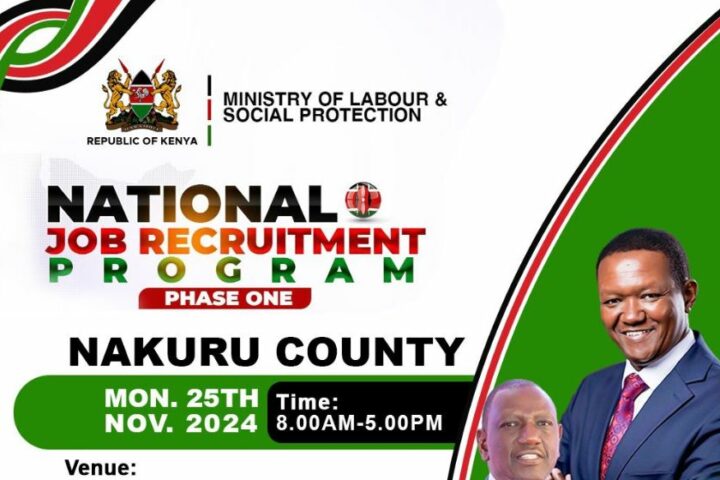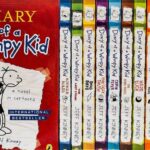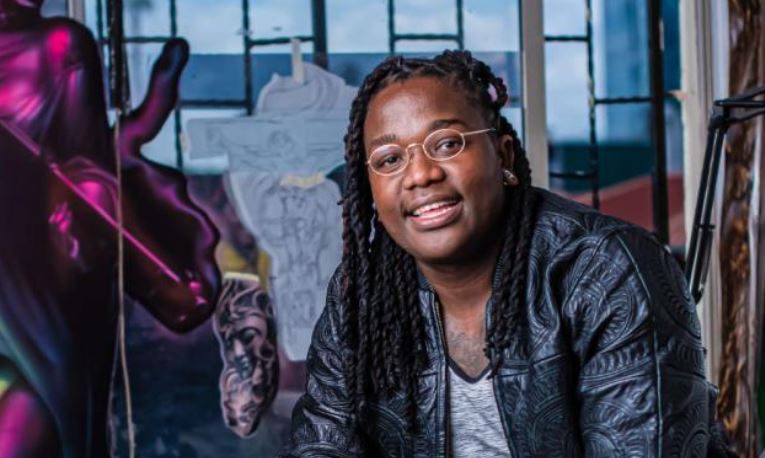
Ali spoke to The Nairobian about his hustle.
*****************
You have made art your business, how have you perfected it?
Arts was my passion since childhood. Before I settled on tattooing, I started by drawing and customising T-shirts. I used to draw images on paper and later, I moved to canvas. At the same time, I perfected working on customised t-shirts since 2009.
Talking of startup, how was it?
My journey in arts dates back to 2008, the year I did my KCPE. I didn’t perform well and due to financial constraints, I did not proceed further. Light dimmed on my dream to excel in education. I was living in Migadini in the coastal region where I was born and raised. I stepped out to look for greener pastures. I moved to Nairobi and stayed in Majengo estate. It is here that my art work was birthed.
I started off working as a broker at the Gikomba market, where I would negotiate a price for a shoe, picked off the bales to interested customers. First, I would strike a sale price with the customer, which had a small commission for my effort before I direct them to the stall selling the item. The more clients I brought the higher pay I earned. In the process, I saved money and moved to Shauri Moyo where I opened a car wash business in partnership with a friend.
However, as I was doing all these hustles, I was busy perfecting my skills in art. I used to get T-shirts at the same Gikomba, customise them, then sell at a premium price.
When did you make a breakthrough in arts business?
It is while at Shauri Moyo where I had created a good chain of friends that a painting opportunity came. The Nairobi City Council gave us a tender, together with my friends, to paint some city council buildings, including the Shauri Moyo police station. We worked for two weeks but, unfortunately, we were never paid. While still feeling dejected after the deal fell through, I bumped into a friend, who had inked a big tattoo of his father’s face on his chest. I had perfected my skills in drawing by then. It inspired me to try my hand in tattoo art.
I inquired from him the person behind the art masterpiece and he introduced me to him. The rest is history. Then, it was manual tattooing using normal needles and ink derived from smashed tomatoes, mixed with car dust. I perfected my work there and I was good to go.
From there, I researched how I could make my work unique and perfect. I visited a friend in the city’s Central Business District, who did graffiti for matatus. He had a machine for tattoos and it’s there that my star started shining. I was encouraged and aspired to own mine. Luckily, in that struggle, I got a client who loved my work and he linked me to Gertrude Children’s Hospital in Muthaiga, where I was got a tender to draw an art mural in 2011.
Being your first tender, how would you describe the deal?
It was like my lifetime pay. By then, I had closed the car wash and opened a small mutumba business at Mtindwa but it wasn’t bringing in much. The deal got me to drop the business, bought the machine, and started my life in Jericho because all along I was staying with friends.
What does art mean to you?
Art is a full-time job, which pays my bills. At the same time, it’s a medicine, people use art to relieve their pain in a different way.
What are the demographic profiles of people getting tattooed?
When I started, it was only embraced by youth. Today, more mature people are coming out to get the ink, they are allowing their bodies to become canvas for ink artists. In addition, there are advances in machines used for tattooing and trends keeps on changing. Today, you find more mature people inking their faces with tattoos. We have people inking their parent’s or kid’s face on their skin. It has become a common trend, especially for people, who seek unique ways to remember departed souls.
Do you do piercing?
Yes, I do all kinds of body piercing – be it public or private. It depends on client requests, though the common areas cherished by many are the nose, clit, nipples, and belly button.
Why are youth embracing piercing and tattooing of private parts?
Piercing of private parts of the body brings flavour in sexiness. Their is a sense of fulfilment for people who pierce their genitals whenever they make love…. piercing enhances arousal and pleasure during the play same applies to tattoos. There are partners who elicit extra arousal just by touching or seeing the tattoos. In short, it gives more pleasure to partners.
How did you feel the first time you worked on one’s private part?
My first experience was tough. I had hard time working on it but the more I kept doing the more I got used to it. Right now, I am used to it. I am a professional. I work with discipline and my focus is on on my work and not the client’s genitals.
How are tattoos categorised?
Tattoos are categorised as private when one doesn’t want them seen by everyone (public). They are mostly done underneath the boobs, in between the thighs, on the butt and other parts that are considered private. For public, it’s visible by everyone.
Describe the kind of tattoos you do?
I work on all types of tattoos. I believe tattoos are just tattoos because at the end of the day someone trusts me to ink a permanent mark on their body.
Are tattoos a bad culture or do you think it’s unreal perception?
To me tattoo is just like any other art work that’s applied on the body. Tattoos bring confidence to people, especially those who carry physical scars. They find it hard to walk when visible. In short, there is nothing bad about tattooing, it is just like any other art that adds beauty to the body.
What challenges have encountered and how do you deal with them?
Tattooing and piercing have bad times, especially during cold weather conditions. Most clients avoid inking during the cold season but I have diversified to other types of art like painting, T-shirts customising and doing graffiti for matatus.
Are their tattoos you have worked on which appeal to emotions?
Yes, right now I am working on a breast cancer survivor to cover her scars. Working on such clients gives me the privilege of being part of their recovery journey. It makes me value my job to give hope and confidence to such clients.
There those who says tattooing is therapy, is there any truth in it?
Yes, I have worked on people who are distressed, heartbroken or those enduring the pain of losing a loved one but upon working on them, they get better, some even heal completely. This happens mostly during tattooing process, people have different expression of anger reliever. Some will scream during the process while others prefer applying the image of anger as a sign of disappointment.
What kind of tattoos do majority prefer during these moments?
Those with heartbreaks mostly request for an angry lion symbol to show their disappointment or a flying bird as sign of freedom. For mourners, they request images of their departed kin to be inked next to their heart or hand.
How do you deal with clients who have their partners’ images on their skin and upon break up, they ask for removal?
Before taking up an assignment, I advise and try to discourage them. I also give them time to think over it and decide though majority who come in with such requests are mature people who have been married for quite some time. In case of a change of mind, I use lasers in the removal process.
Who are some of the celebrities you have worked on?
I worked on Diamond Platinum’s tattoo, Otile Brown, Nazizi and I also worked on Khaligraph Jones, Talia Oyando and so many celebrities. I felt privileged because it gives me the feel of how good my work tag is out there. Majority of celebrities I get them through referrals or my social media handles, which is a sign that my work is being appreciated out there.
How much does it cost to do a tattoo?
I charge between Sh2,500 and Sh200,000. The least I have ever charged was Sh1,000 for a dot tattoo while the highest was Sh180,000.

